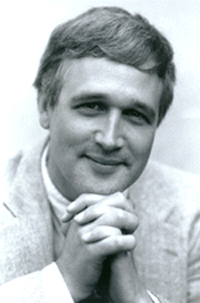Gregory Fritze is a prize winning composer, Fulbright Scholar, as well as an active performer, conductor and educator. He is Chair of the Composition Department at Berklee College of Music, where he has served on the faculty since 1979. He had been the conductor for the Berklee Concert Wind Ensemble for fifteen years (1983-98). An ensemble which specialized in new compositions for winds, he has conducted performances of more than thirty premieres. Always being an advocate for new music, in 1983 Mr. Fritze initiated an annual Berklee student composition competition to encourage young composers to write for the band medium which has yielded more than one hundred new compositions over the last fifteen years.
He has written over forty compositions for orchestra, band, chamber music and soloists. His recent composition awards include winning the1998 IBLA Grand Prize in Composition by the European International Competition Ibla, Sicily; a grant from the Massachusetts Council for the Arts in 1997 for his composition for band La Tomatina, Menzione d'Onore (highest award given) of the Mario Bernardo Angelo-Comneno International Music Competition by the Accademia Angelica Costantiniana Arti E Scienze (Rome, Italy) in 19967 for String Quartet , eleven awards from the Standard Awards Panel of ASCAP (American Society of Composers, Authors and Publishers), grants from Meet the Composer, Walt Disney Fellowship, and other composition awards. His Twenty Characteristic Etudes for Tuba won first prize in the 1991 Composition Competition sponsored by the Tubists Universal Brotherhood Association. He has been commissioned by many orchestras, concert bands, chamber ensembles and soloists in the New England area and throughout the world. His compositions include works published by SeeSaw Music, Minuteman Music, TUBA Press and Musica Nova and have been performed extensively throughout the world. He is recorded as composer and/or performer on CRI Records, Crystal Records, Mark Records and others.
He been a guest lecturer, conductor and performer at many colleges, universities and music festivals in the United States, Canada, Japan and Europe including: Convegno Bandistico Cantonale in Mendrisio, Switzerland, Sapporo (Japan) Music Festival, Musicfest Canada Ottawa, Musicfest Canada Calgary, Musicfest Canada Winnipeg, Musicfest Canada Toronto, Musicfest Canada Vancouver, Massachusetts Instrumental Conductors Association, Rhode Island Music Educators Association, Pennsylvania Music Educators Association, American Band Association, The Mozart Festival (Burlington, Vermont), New York Brass Conference, New England Tuba Festivals, Berklee College of Music High School Jazz Festivals and others.
In addition to being Principal Tubist with the Rhode Island Philharmonic Orchestra, he is a member of the Cambridge Symphonic Brass Ensemble, the Colonial Tuba Quartet and performs regularly with various ensembles around New England. Mr. Fritze has premiered many works for tuba, including several written especially for him such as the Concerto for Tuba and Band by John Bavicchi and the Concerto for Tuba and Jazz Ensemble by Ken Pullig. Mr. Fritze was born in Allentown, Pennsylvania in 1954 and received his Bachelor's Degree in Composition from the Boston Conservatory where he studied composition with John Adams and tuba with Chester Roberts. He received his Master's Degree in Composition from Indiana University in Bloomington, Indiana where he studied composition with Thomas Beversdorf, John Eaton and Fred Fox, tuba with Harvey Phillips.
Mr. Fritze's first association with the band music of Spain was in 1988 when he composed the piece Festival Overture especially for a Valencian band under Maestro Francisco Carreño Garrido. Mr. Fritze's first trip to Spain was in 1993 when he first met maestro Carreño in person in Buñol. Maestro Carreño introduced him to the wealth of concert bands around Valencia. With the help of Maestro Carreño, Mr. Fritze was able to secure preliminary information and invitations for the research of Compositions for Wind Instruments by Spanish Composers. Most of this research was done while in Valencia, Spain during the spring of 1996 while on a sabbatical from Berklee College of Music and during the spring of 1997 while on a Fulbright Senior Research Grant.
